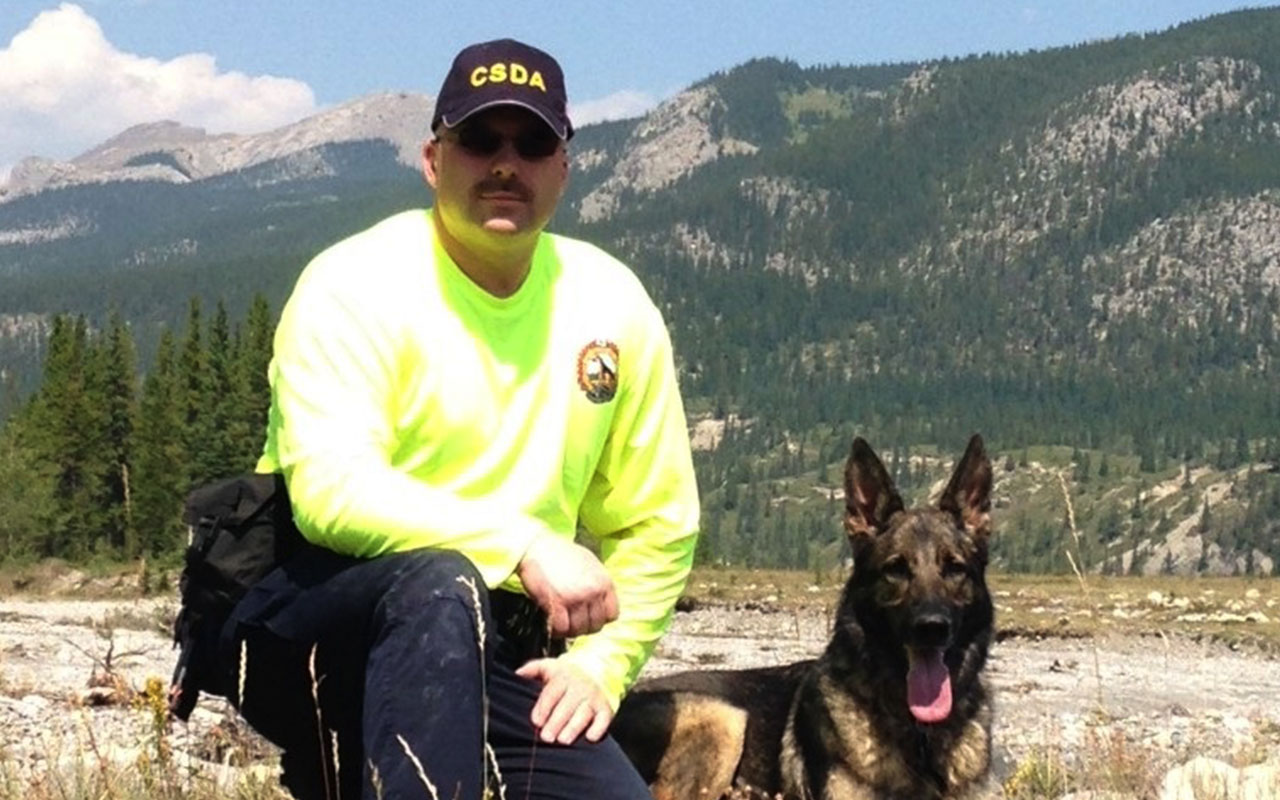
Civilian Search Dog Handlers train in the same manner as RCMP Dog Handlers, with the following exceptions:
We do not train our dogs in apprehension and we do not train our dogs to search for illegal substances. In all other aspects we train much the same way.
Listed below are the profiles our dogs may be trained for. Some profiles are “specialty profiles” and are not mandatory. In addition to the search profiles, we also train our dogs in obedience and controlled agility.

Person Search
(First year profile, mandatory)
Person Search is the basic profile all our dogs must excel in. The search for a lost person is often a life and death situation and the dogs MUST be proficient and absolutely reliable in this profile. This is a mandatory profile. The dogs work off-leash, covering an area (or zone) assigned by the search manager. The handler guides the dog in a methodical pattern through the area, but the dog is allowed to range farther than in most other profiles. In this manner, a lot of ground can be covered in a relatively short period of time
Large Article Search
(First year profile, mandatory)
The dog that will search for and find large articles (such as backpacks, articles of clothing or other items of significant size) can help provide valuable clues in a search for a missing person such as direction of travel. The conditions or situations under which articles are found may also give clues as to the state of mind of the lost individual.
Small Article Search
(Second year profile, mandatory)
Small Article Search involves a search for very small items such as buttons, bullet casings, jewelry, or other similarly sized objects. This profile is usually worked on-leash for careful control although handlers have the option of working their dogs off-leash. A small area is designated for the dog to search and the dog and handler move slowly, carefully and methodically through the area, literally covering every square inch of the ground. The dog keeps its nose down to the ground, similar to tracking, and searches very, very carefully.
Ditch Search
(First year profile, mandatory)
This is essentially a combination of a large article and an evidence search, performed on-leash for safety. These searches are done along roadside ditches – usually for evidence.
Alley Search
(Second year profile, mandatory)
This profile is a combination of a large/small article and an evidence search. Special training is done in this profile due to the nature of the areas searched. An urban alley is an area highly contaminated by distracting scents, neighbourhood dogs and often, cats. So, the dogs must learn to work to ignore distracting sights, sounds, and smells. Alley searches are primarily performed on-leash but may be worked off-leash if the dog works well under verbal control from its handler.
Tracking/Trailing
(Optional)
In this profile, the dog is worked in harness on a long line. The dog is trained to follow the scent of a moving person. This profile has two levels – one is rural, one is urban. All dog handlers are encouraged to train in this profile (this ability can also aid the dog on an off-leash search) but, certification in this profile is optional to the handler. It requires ongoing training, so normally the amount of time one can dedicate to training in all the profiles is the deciding factor on whether or not a dog and handler will certify in this profile.
Human Remains Detection
(Optional after second year certification)
This is another specialty profile that is very different from the mandatory profiles. In this instance, the dogs are trained to search for and locate human remains. The training of dogs in this profile is primarily for animal-scattered remains, but covers most situations under which human remains may be found, based on historical data for past cases in various regions.
